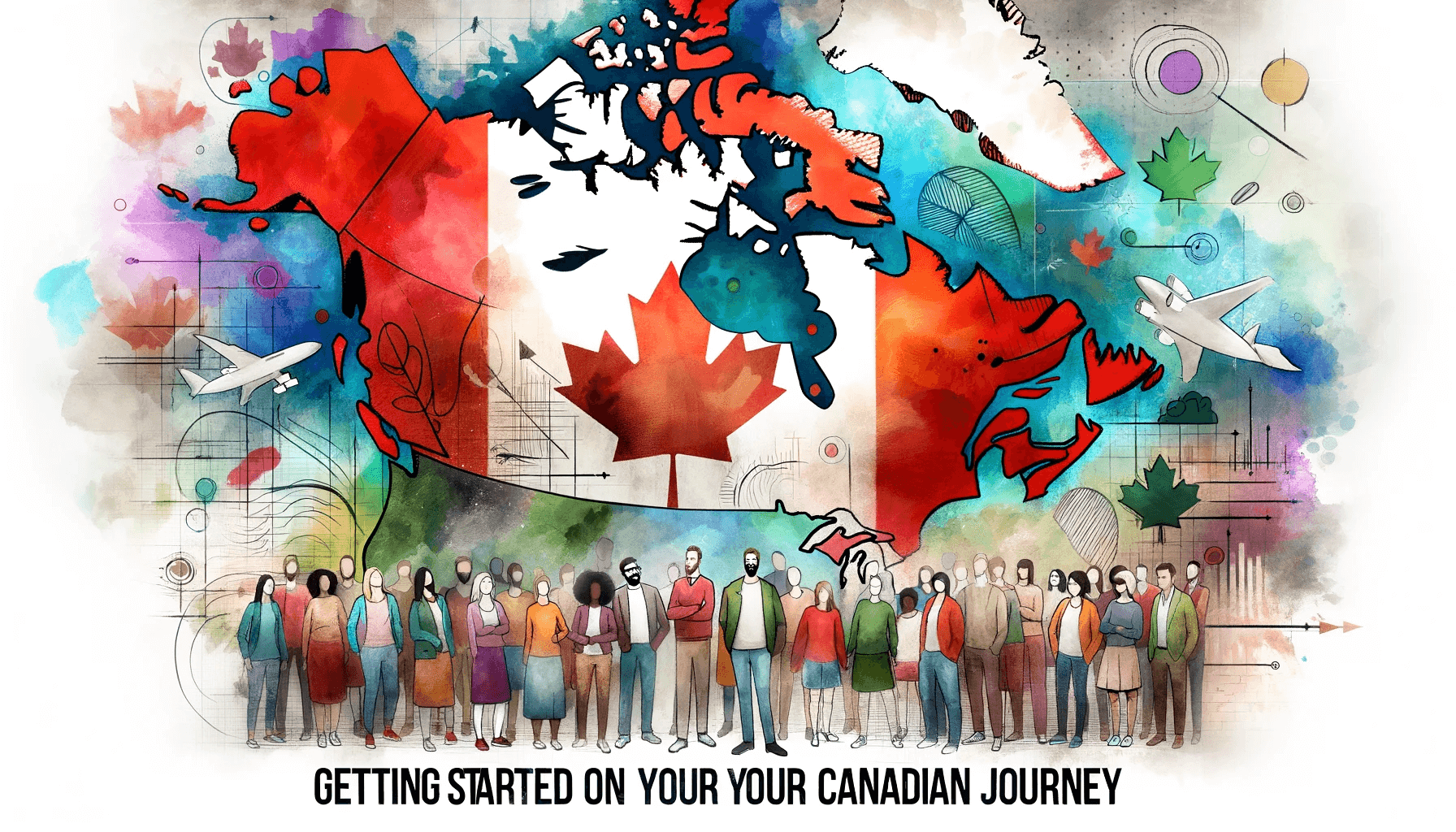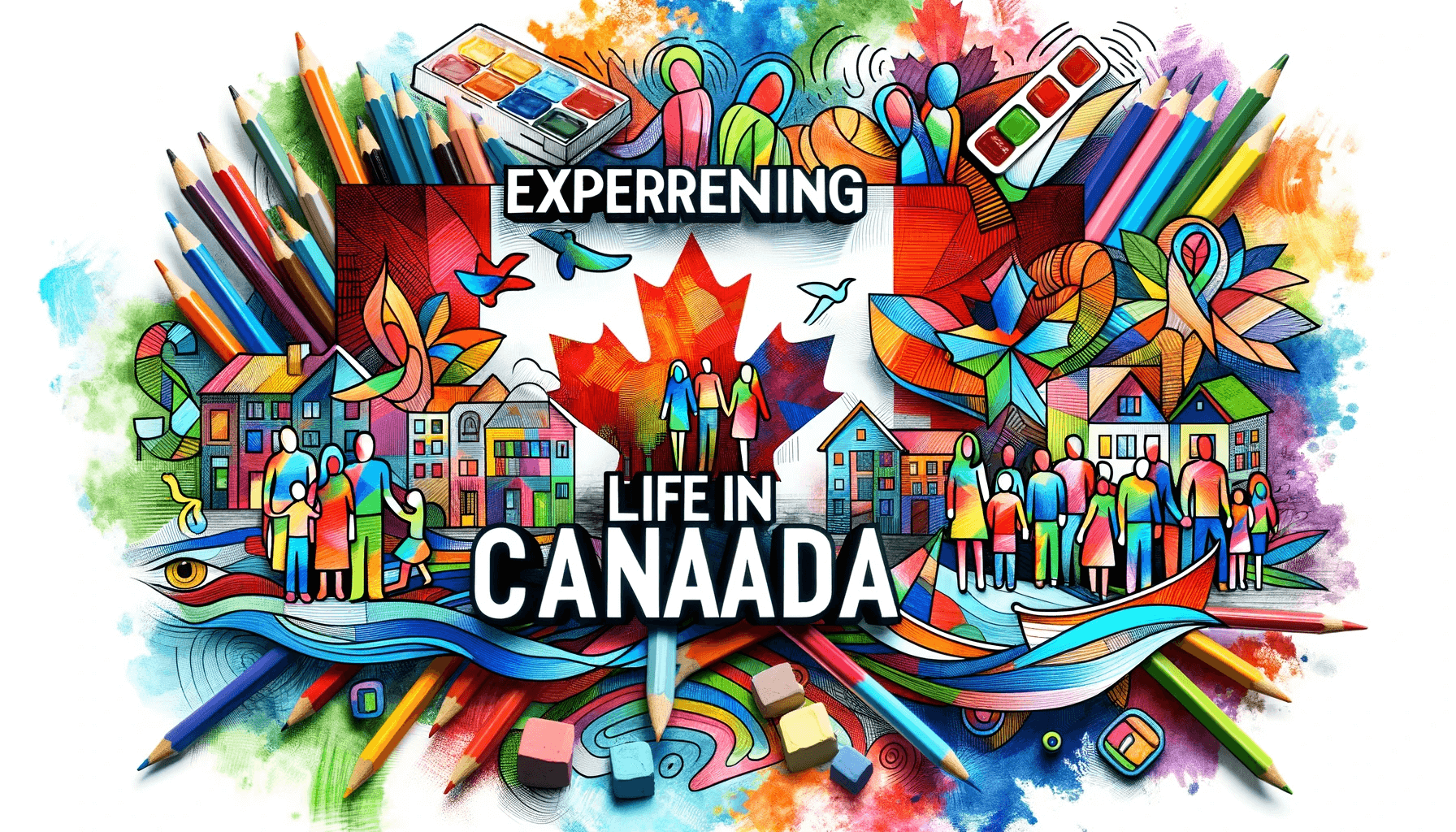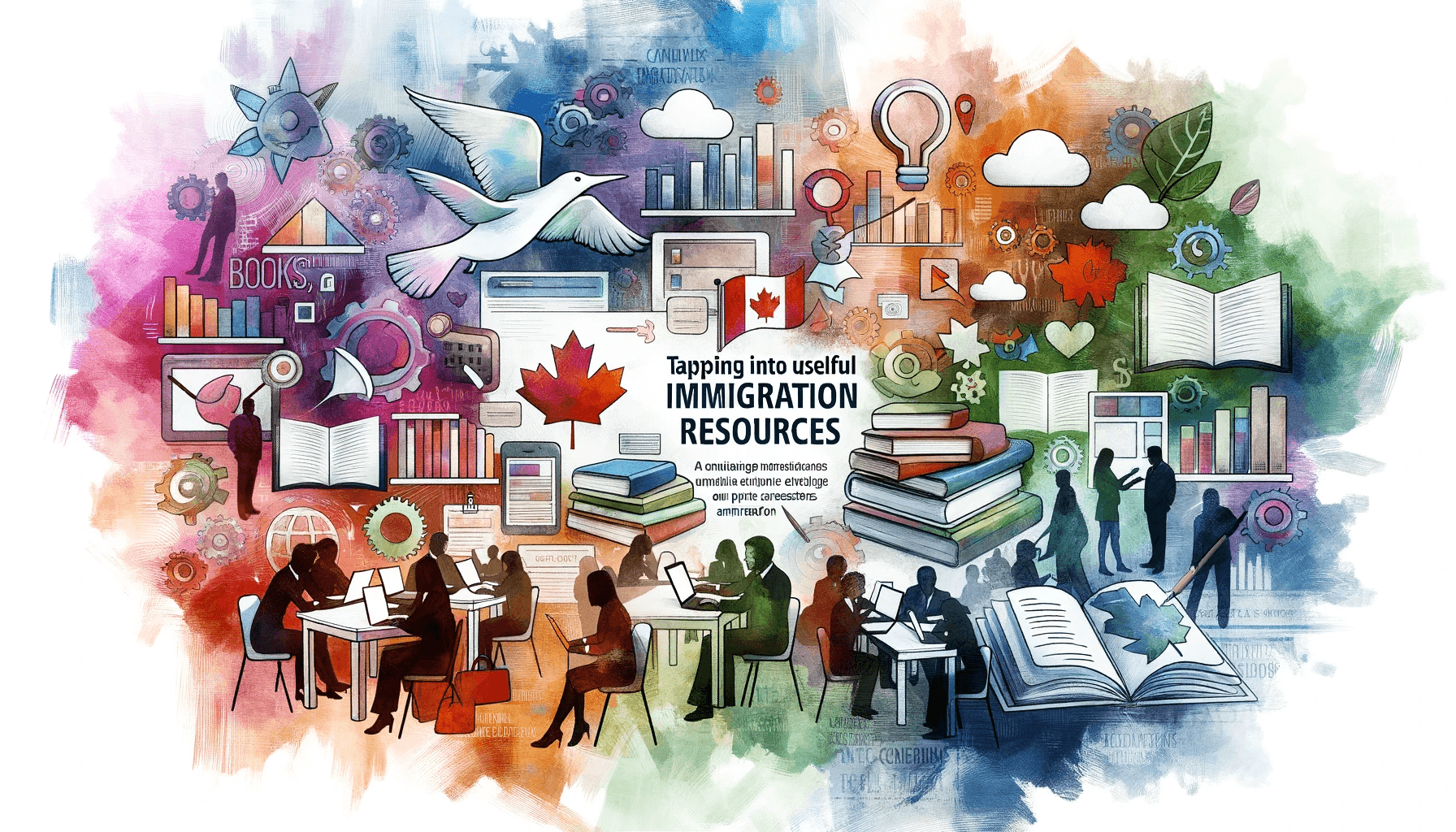How to Immigrate to Canada | Requirements & Process Simplified
Your Quick 30-Second Answer on How to Immigrate to Canada!
Canada offers diverse immigration pathways for those looking to move to the country. The Express Entry system caters to skilled workers through programs like the Federal Skilled Worker and Canadian Experience Class. Family Sponsorship allows current residents to bring over relatives, while the Provincial Nominee Program offers immigration through provincial nominations. Those aiming for Quebec have specific programs like the Quebec Skilled Worker Program. The Atlantic Immigration Program is designed for workers and graduates in eastern provinces. There are also various Economic Pilots, including the Caregivers and Agri-Food Pilot Programs, and opportunities for entrepreneurs through the Start-up Visa. A pathway exists for temporary residents to gain permanent residency, along with programs for refugees and humanitarian cases. Under the Immigration Levels Plan for 2024-2026, Canada aims to welcome 485,000 new permanent residents in 2024, increasing to 500,000 by 2026, across all categories including economic, family, and humanitarian.
For an in-depth overview, please see the "Table of Contents" below.
Know how to Immigrate to Canada: Understand the Requirements
Welcome to this easy-to-follow guide on how to immigrate to Canada. Detailed insights into the requirements to immigrate to Canada, expert tips, and a streamlined process.
TABLE OF CONTENT
Getting Started:
1. Who Should Use This Guide?
2. What is Immigration to Canada?
3. Canadian Immigration Basics
Preparing for Your Journey:
4. Explore Pathways to Canada
5. What Do I Need for Application
6. The Application Process
Living in Canada:
7. Life in Canada
8. Overcoming Challenges
9. Country-Specific Guide
Additional Insights:
10. Conclusion & Next Steps
11. Fictional Case Study
Useful Resources:
12. Common Questions (FAQs)
13. Resources for Immigration

1. Who should use this Guide?
This guide is your secret weapon to Canadian permanent residence. Primarily, this guide is for anyone who wants to learn about immigration to Canada. If you find the official rules and documents about the requirements to move to Canada confusing, this guide can be your helpful friend. Whether driven by economic opportunities, Canada offers a range of avenues including provincial nomination programs. Plus, it's packed with insider secrets like immigrating to Canada without IELTs to help you better than the rest when you apply!
Understanding the pathway to permanent residence is important for those seeking a long-term future in the country. Immigrating to Canada offers various pathways, each catering to different applicant categories and needs.
1. Express Entry
- For skilled workers, Express Entry is the primary route. It includes the Federal Skilled Worker Program, Federal Skilled Trades Program, and the Canadian Experience Class.
2. Family Sponsorship
- This program allows Canadian residents to sponsor relatives, including spouses, partners, children, parents, and grandparents.
3. Provincial Nominee Program (PNP)
- Applicants can immigrate by being nominated by a Canadian province or territory.
4. Quebec Immigration
- Specific programs like the Quebec Skilled Worker Program cater to those looking to settle in Quebec.
5. Atlantic Immigration Program
- Targets graduates and workers in New Brunswick, Prince Edward Island, Nova Scotia, or Newfoundland and Labrador.
6. Economic Pilots
- Includes the Caregivers Program, Agri-Food Pilot, Rural and Northern Immigration Pilot, and the Economic Mobility Pathways Project.
7. Start-up Visa
- For entrepreneurs looking to start a business in Canada.
8. Temporary Resident to Permanent Resident Pathway
- A limited-time pathway for certain temporary residents working in Canada and their families.
9. Refugees and Humanitarian Programs
- Canada offers pathways for refugees and those under humanitarian programs.
10. Francophone Immigration
- For those looking to live, work, or study in French outside Quebec.
Immigration Levels Plan 2024-2026
- Canada plans to admit 485,000 new permanent residents in 2024, with numbers increasing to 500,000 by 2026 across all immigration classes: economic, family, and humanitarian.
Each immigration pathway has specific eligibility requirements and application processes. Applicants are advised to select the most suitable program based on their individual circumstances and goals.
2. What is Immigration to Canada?
Starting a new life in another country is a big step, but understanding how to make that move shouldn't be hard. Let's break down what you need to know about making Canada your new home.
1. Canada's Open-Door Approach:
Canada welcomes people from all over the world, whether they are skilled workers or have family members already living there or are seeking safety from danger in their home country. The country's policies are built to help new arrivals find their place in Canada's diverse society.
2. Steps on how to immigrate to Canada:
First, you'll need to find the right immigration program for you, as Canada has several. The Express Entry program is a popular route for skilled workers because it's pretty fast. If you have family in Canada, they might be able to sponsor you to live there. There are also special programs for people fleeing danger in their own countries. Each program has its own set of rules designed to make the process fair for everyone.
3. What You Need to Move to Canada:
No matter which program you choose, there are some common things you'll need. You have to show you can take care of yourself financially once you're in Canada. Being able to speak English or French helps a lot in everyday life and work, and having no serious criminal history is important for the safety of everyone. Knowing what you need before you start can make everything go more smoothly.
4. The Feelings Involved in Moving:
Moving to a new country is a big emotional step. You're leaving what you know for something new. It's normal to feel a mix of excitement, sadness, and nervousness. But remember, Canada is known for being a place where new arrivals can find community and support.
5. Opportunities in Canada:
In Canada, education and developing new skills are highly valued. There are great schools and training programs. People who move to Canada contribute a lot to the country, especially in the job market. There are many chances to learn and grow in your career.
6. In Short:
Making the move to Canada is a big decision, but understanding the steps involved makes it easier. With the right preparation, knowledge of what you need to do, and a positive attitude, the process can be a stepping stone to a bright future. Canada is ready to welcome you into its diverse and supportive community.
This is about more than just meeting rules; it's about starting a new part of your life full of opportunities. So, if you've been thinking about making Canada your new home, the door is open.
3. Immigrate to Canada: What are the Basics?
Entering the world of Canadian immigration involves navigating a system that, while complex, is built to be fair and to support not only Canada's growth but also provide global humanitarian assistance.
1. System's Design: How It Helps Applicants
Imagine the Canadian immigration process as a gateway, designed for fairness and speed. The key to this gateway is the Express Entry system, acting much like a fast-track lane, where those who fit Canada's needs best get served quickest. It's like being in a café where customers (applicants) with the most popular order (skills and experience) get served first. This system scores you points for your age, how well you know English or French, your education, and your job history.
Plus, this isn't a one-size-fits-all approach. The criteria adjust over time, much like how a music playlist might change depending on the audience's mood. This means that what Canada looks for in a potential resident can shift based on what jobs are in demand or what skills are needed at a particular time.
2. Categories of Immigrants: Different Paths for Different Goals
Think of Canada's immigration as a tree with three main branches to immigrate to Canada:
- 2.1. Economic immigrants: Picture a city expanding with new buildings. For this, it needs architects, engineers, and construction workers. Similarly, Canada welcomes people with certain skills or job experiences that the country currently needs for its "economic construction."
- 2.2. Family reunification: Just like a family reunion where everyone gathers for a big meal, Canada allows its citizens and people who already live there permanently to bring in their close family members. It's Canada's way of keeping families together and making the community strong.
- 2.3. Refugees: Imagine being in a storm and finding a safe shelter. Canada provides this shelter to people escaping dangerous situations in their own countries. It's a part of Canada's global promise to protect human rights and offer a safe haven.
3. Federal and Provincial Roles: Teamwork in Action
In managing who comes to live in Canada, imagine the federal government as a principal setting the school rules, while the provincial governments are like teachers who know what their individual classrooms need. The provinces can pick students (or immigrants) based on what their "classroom" requires through something called Provincial Nominee Programs (PNPs). Each "classroom" has unique needs; for example, one might need more science nerds (IT professionals), while another might need more artists (cultural sector workers).
This teamwork ensures that all areas across Canada get what they need to flourish, whether it's more people in one job sector or balancing the population in rural and urban areas.
In wrapping up, the Canadian immigration system is like a well-conducted orchestra, with each section of instruments (government layers and immigrant categories) playing its part to create a harmonious melody. It adapts, it's fair, and it's designed to consider human stories and dreams—making Canada a front-runner in setting a global standard for a successful immigration system.
4. Can I Explore Different Pathways on How Immigrate to Canada?

Canadian immigration offers various routes, each like a unique path leading to a beautiful park, which is life in Canada. These pathways are designed not only to meet the needs of Canada but also to provide opportunities for those wishing to make this diverse country their home.
1. Express Entry: Fast and Strategic
The Express Entry system is like a fast train service designed to quickly bring skilled workers to Canada. The train (system) selects passengers (applicants) based on how well they match Canada's current job market needs.
- i. Understanding Criteria and Steps: Just like you need a ticket for a train, to board the Express Entry, you need certain things. These include language test scores (like your passport to communicate), education (your luggage of knowledge), and work experience (your travel history). The better your "travel" preparations, the higher your chances of getting on the fast train!
- ii. The Comprehensive Ranking System: This is a big scoreboard. Think of it like a video game, where you earn points for your skills, experience, and other factors. The higher your score, the better your chances of receiving an Invitation to Apply (ITA) for permanent residence, similar to a VIP pass to a special event.
2. Family Sponsorship: More Than Reunion
The family sponsorship is like a heartfelt letter inviting your loved ones to immigrate to Canada.
- i. Sponsorship Eligibility: Not everyone can send this "letter." You must be a Canadian citizen or permanent resident and meet certain conditions, much like making sure you have a big enough home and enough food for guests.
- ii. Responsibilities of the Sponsor: This is not just an invite; it's a promise that you will take care of your family members. Like assuring you'll provide the food, shelter, and necessities they need so they don't have to ask for help.
3. Provincial Nominee Program: Matching Skills to Needs
Think of Canada as a garden (federal programs) with different plots (provincial programs). Each plot needs different care and has unique conditions for growth.
- i. Navigating Through Requirements: Each province has its own "recipe" for growth, looking for people with the right set of skills and experience that match their specific needs. It's like a puzzle where you fit perfectly in one spot.
- ii. Benefits of Provincial Nomination: If a province chooses you, it's like getting a golden ticket. This nomination boosts your Express Entry score, significantly increasing your chances of being invited to apply for permanent residence.
4. Study Permit: Education, Your Gateway
Canada values knowledge and offers a pathway through education.
- i. Qualifying for a Study Permit: To embark on studying in Canada, you must first get admission to a Canadian learning institution, much like receiving an invitation to a prestigious club. Then, you must show you can pay for your studies, stay, and return travel, akin to proving you have enough resources for a trip.
- ii. From Classroom to Permanent Home: After your education, you can often stay and work, gaining the experience that can pave the way to permanent residence. It's like an internship that becomes a full-time job, a golden chance to continue contributing to and being part of the Canadian community.
Remember, while these pathways may seem like a trek through a vast forest, each step is a move towards a fulfilling life in Canada, contributing your unique skills and reaping the benefits of a society that values diversity and offers opportunities for growth and stability.
5. What Do I Need Before Starting the Immigration Application?
Understanding how to immigrate to Canada requires clarity. it is akin to preparing for a long voyage. Before you set sail, there are crucial steps you must take to ensure your journey is not only successful but also as streamlined as possible.
1. Universal Prerequisites: Building Your Foundation
- i) Language Tests and Education: Imagine wanting to join an international conference but you cannot understand the language spoken, or lacking the necessary knowledge about the conference topic. Proficiency in English or French, and having your education assessed, are key. These are not just bureaucratic steps but essential tools for communication and showcasing your skills in Canada. They open many doors, professionally and socially.
- ii) Work Credentials: This is akin to carrying a letter of recommendation from your previous employer whenever you go for a job interview. Your work experience is proof of your skills and what you can contribute to the Canadian workforce. It tells Canada you are capable and dependable in your field.
2. Financial Preparedness: Ensuring a Smooth Sail
Having proof of funds is like carrying an emergency kit on a voyage. Canada wants to know you can take care of yourself and your family during your initial time in the country, without needing immediate financial aid. It’s about ensuring you have a safety net while you settle in your new home.
3. Clearances: Your Passport to Entry
- i) Medicals: Before joining a public gathering, you often need to ensure you are not carrying any contagious illness. Similarly, a medical exam ensures you’re not bringing in any serious health conditions that could pose risks to others or place excessive demand on Canada’s health system.
- ii) Police Verifications: Think of this as a background check before you are given a key to someone’s home. Canada needs to ensure you have a clean slate, that you’re responsible and won’t be a threat to your new community.
4. Settlement Plan: Visualizing Your Destination
Creating a settlement plan is like having a detailed map and itinerary for your journey. It helps you visualize where you're going, what you plan to do once you arrive, and how you will accomplish it. This plan is a way of showing that you’re not venturing into this journey blindly but with clear goals and steps on how to achieve them.
Your preparation before applying should start from requirements to immigrate to canada. It is more than just collecting documents and meeting formal requirements. Each step is a crucial part of ensuring you are ready for life in Canada, equipped with the skills, means, and mindset to make your Canadian dream a successful reality. It's about laying the groundwork for integrating into a new community, contributing your skills, and building a secure, fulfilling life.
6. How Do I Navigate the Application Journey to Land in Canada?
Setting forth on your journey to immigrate to Canada is much like preparing for an expedition. You need the right tools, the correct map, and a sense of direction. Here's a breakdown of the steps, simplified for clarity and ease:
1. Documentation Demystified: Your Essential Toolkit
When embarking on a trek, you would first ensure you have the necessary tools and gear. Similarly, for your immigration process, you'll need specific documents:
- Identification: Think of it as your traveler's badge, certifying who you are. Examples include your passport and birth certificate.
- Credentials: These are proof of your skills and qualifications, akin to showcasing your trekking expertise. Such documents could be your educational certificates or professional qualifications.
- Personal Records: These serve as a testament to your character, much like recommendations from fellow travelers. Police clearances and health certificates fall under this category.
2. Application Submission: Setting Your Course to Immigrate to Canada
Once you've gathered your essentials, the next step is to understand where to submit them and how:
- Where: In the digital age, the majority of applications, much like booking trekking spots, are done online through designated portals.
- How: Just as you'd carefully map out a trek, ensure you meticulously fill out the forms, attaching all the necessary documentation. Overlooking a step or providing incomplete information can lead to delays, much like missing a checkpoint can hinder your trek.
3. Expenses Demystified: Budgeting for Your Expedition
Every expedition has its costs: from gear acquisition to securing a guide. Similarly, your journey to Canada requires budgeting:
- Application Fees: This is your basic ticket fee, the cost to process your application.
- Additional Costs: These could be likened to buying additional trekking gear, like health checkups, document verifications, or language tests.
- Settlement Funds: These are your sustenance funds for the journey, ensuring you can start your Canadian life without financial stress.
4. Timelines Unraveled: Monitoring Your Progress
Finally, every trekker wants to know the duration of their journey. In the realm of immigration, timelines can vary:
- Processing Time: This is the duration taken to review and process your application, much like waiting for your trekking permit.
- Updates: As with any journey, sometimes there are stops and checkpoints. Regularly monitor your application status, ensuring you're on track and addressing any requests promptly.
In essence, the requirements to immigrate to Canada are mapped out for you. Each step, when approached with understanding and clarity, becomes a milestone, propelling you closer to your Canadian dream. Remember, every journey begins with a single step, and understanding this process ensures your step is in the right direction.
7. What's Beyond the Scenery: Understanding Canadian Life?

Here's a simplified breakdown of what life in Canada entails, kept clear and concise for your understanding. Understanding how to immigrate to Canada requires some insight. It encompasses more than filling out forms and meeting the basic requirements to immigrate to Canada. It is about preparing oneself to join a vibrant community with its unique lifestyle.
1. Canada's Vibrant Culture
Canada boasts a rich cultural diversity, much like a beautiful mosaic made of different colored pieces:
- Diverse Roots: Canada’s culture is an intricate quilt sewn from many fabrics — Indigenous peoples, historical French and British influences, and the traditions of immigrants from around the world.
- Shared Values: Imagine a society where everyone’s rights are respected, similar to rules that maintain peace and order in a community. This is a reality in Canada, where equality, freedom, and respect for cultural differences are treasured.
2. Economic Prospects: Building a Bright Future
The Canadian economy is robust and full of opportunities, resembling a tree full of fruits ready for harvest:
- Diverse Opportunities: Just like a market full of various stalls, Canada has job opportunities in numerous sectors including technology, health, and natural resources, suitable for different skills and interests.
- Worker Rights: In Canada, workers' rights are protected like a safety net under a high-wire act, ensuring fair wages, safe work environments, and equal chances for promotion.
3. Social Securities: The Canadian Safety Net
Canada's social security system ensures that everyone is cared for, akin to a big family where everyone looks out for each other:
- Healthcare: Think of having a health guardian angel; that's what the Canadian healthcare system is like, providing essential health services regardless of one’s financial background.
- Education and Welfare: Picture a school where no child is left behind, and a helping hand is given to those in need. That's Canada for you, with its strong public education and social welfare programs.
4. Being Canadian: Embracing Dual Responsibilities
Living in Canada is about being part of a larger community, where you enjoy certain rights and undertake specific duties:
- Rights: Living in Canada is like being part of a prestigious club where you are granted significant privileges, including freedom, equality, and a voice in political matters.
- Duties: With great rights come great responsibilities. As a member of the Canadian community, you are expected to respect laws, contribute to society, and uphold the rights of others, just as you would care for your family and friends.
Therefore, understanding how to immigrate to Canada is about more than procedures and paperwork. It's about integrating into a rich cultural fabric, contributing your unique thread, benefiting from the country’s abundant opportunities, and committing to uphold the rights and duties that come with being a part of this dynamic community.
8. How Can I Turn Challenges into Stepping Stones during the Immigration Journey?
Understanding how to immigrate to Canada requires good planning. Envisioning it as a journey can make the process seem more approachable. Like any expedition, preparation, adaptability, and sometimes guidance, ensure a smoother ride. Here are easy-to-understand tips to help you turn potential setbacks into positive strides forward.
1. Application Strength: Evading Common Pitfalls
Think of your application like preparing a vital presentation; every detail contributes to the overall impression.
- Complete Information: Make sure to fill out every section of your forms, similar to how you would carefully complete a formal work assignment or school project. Incomplete applications are like unfinished business; they do not lead to success.
- Honesty is Paramount: Provide accurate details about your history and credentials. Pretend you are recounting your life story to a trusted friend; honesty will serve you best.
- Attention to Detail: Treat your application as you would a meticulous task at your job or a daily activity requiring precision, like cooking or budgeting. Ensure no errors or inconsistencies.
2. Staying Updated: How to Navigate Policy Changes
Rules and procedures can change; staying informed is like keeping up with local news or community updates.
- Official Channels: Rely on official websites and authorized communication as your sources, much like listening to a news bulletin for accurate reports.
- Adaptability: Ready yourself to adapt to new rules, like changing your routine to match a new work schedule or family commitment.
3. Expert Guidance: Identifying When You Need Professional Advice
Recognize when it's time to seek advice, much like consulting a doctor when home remedies do not work.
- Complex Scenarios: If your application involves intricate details or unique circumstances, akin to a challenging work project or a family matter requiring outside counsel, consider professional guidance.
- Delays and Issues: If you face unexpected hurdles, similar to repeated issues at work or home, it may be time to seek expert advice.
Understanding the requirements to immigrate to Canada does not have to be overwhelming. By focusing on these simple yet crucial aspects, you are not just overcoming challenges; you are taking significant strides on your path to a new life in Canada. Each step is an opportunity for growth, ensuring you are not just prepared to meet the application requirements, but also to thrive in your new home.
9. How Can I Get Tailored Guidance for Immigrating from Various Countries?
Detailed Guidance for Prospective Immigrants Based on Origin
Understanding how to immigrate to Canada requires clarity on various elements, including qualification recognition, professional adaptation, and navigating the visa process. These aspects often present country-specific challenges, necessitating a tailored approach for aspirants from different nations.
1. Immigrate Canada from India:
- Qualification Recognition: Indian degrees, especially in fields like IT and healthcare, generally require credential assessment for Canadian equivalency. This process can be time-consuming and demands meticulous preparation of educational documents.
- Professional Adaptation: Familiarity with global work standards is advantageous, but readiness to embrace Canadian workplace culture, emphasizing teamwork and work-life balance, is crucial.
- Visa Processing: The Express Entry system is popular, but highly competitive. Indian applicants need to maximize their Comprehensive Ranking System (CRS) scores by leveraging higher education, language skills, and work experience.
2. China:
- Qualification Recognition: Chinese applicants often face rigorous educational credential assessments. Pursuing Canadian accreditation or additional local certifications can enhance employability.
- Professional Adaptation: Understanding Canadian professional etiquette, punctuality, and direct communication style is essential for workplace integration.
- Visa Processing: The high volume of applicants and strict documentation verification can prolong the process. Ensuring accuracy and completeness of submitted documents is critical.
3. Immigrate to Canada from Nigeria:
- Qualification Recognition: Educational and professional credentials might require Canadian equivalency evaluation, and in some cases, further training or examinations, particularly in regulated professions.
- Professional Adaptation: Adhering to Canadian standards of work ethics, transparency, and punctuality is fundamental for professional success.
- Visa Processing: Stringent documentation and financial proof requirements necessitate thorough preparation. Access to reliable internet is crucial for timely online application submissions.
4. Immigrate to Canada from Pakistan:
- Qualification Recognition: Degrees, particularly in medical and engineering fields, typically undergo detailed scrutiny and may require supplemental Canadian certifications.
- Professional Adaptation: Embracing a collaborative work environment with emphasis on equality and open communication is essential.
- Visa Processing: Consistency in documentation, especially concerning work experience and financial stability, is vital due to the rigorous verification process.
5. Philippines:
- Qualification Recognition: Nurses and other healthcare professionals may need to undertake Canadian licensure exams, necessitating extensive preparation.
- Professional Adaptation: Adopting Canadian workplace norms, which may differ from hierarchical corporate cultures, is key.
- Visa Processing: The caregiver pathway is a common route, but it mandates precise contract details and adherence to labor rights, demanding careful attention.
6. United States:
- Qualification Recognition: While US qualifications are often readily accepted, professionals in regulated industries may need to acquire Canadian licensing.
- Professional Adaptation: Familiarity with multicultural team dynamics and Canadian workplace civility is advantageous.
- Visa Processing: Utilizing provisions under the USMCA for specific professions can simplify entry, but understanding the eligibility criteria is fundamental.
7. United Kingdom:
- Qualification Recognition: UK qualifications are typically well-regarded, but regulated professions may require additional Canadian certifications or exams.
- Professional Adaptation: Adjusting to potential variations in workplace formality and communication styles enhances professional integration.
- Visa Processing: British citizens enjoy relatively streamlined visa processing, but must remain vigilant about the varying processing times and detailed documentation.
8. Immigrate to Canada from Iran:
- Qualification Recognition: Iranian degrees require evaluation for Canadian equivalency, and language proficiency tests are mandatory, often necessitating preparatory courses.
- Professional Adaptation: Acclimating to a more egalitarian and feedback-oriented work culture is crucial.
- Visa Processing: Completing applications accurately is essential due to strict scrutiny, and political factors may influence visa processing times.
9. South Korea:
- Qualification Recognition: For regulated professions, additional exams and licensing in Canada are often necessary, despite the high quality of South Korean education.
- Professional Adaptation: Korean professionals should be prepared for less hierarchical workplace structures and more emphasis on individual initiative.
- Visa Processing: Korean applicants must ensure document accuracy and completeness, particularly when translating materials into English or French.
10. Brazil:
- Qualification Recognition: Brazilian degrees may need Canadian equivalency assessments, and proficiency in English or French is imperative, potentially requiring language courses.
- Professional Adaptation: Expectations of self-promotion and personal initiative in the workplace might differ and require adjustment.
- Visa Processing: Economic factors can affect an applicant's proof of funds, and thoroughness in documenting financial stability is key.
Essential Resources for Immigration Aspirants:
- A. Support Services: These are vital for understanding the nuances of qualification equivalencies, job market trends, and professional licensing requirements in Canada.
- B. Official Channels: These provide indispensable, up-to-date guidance on visa processing, including required documents, fees, and processing times.
- C. Immigrant Communities: These groups offer firsthand insights into common challenges, particularly regarding professional adaptation and credential recognition.
As individuals ponder the requirements to immigrate to Canada, understanding these country-specific insights becomes not just helpful, but essential for a successful journey. This guidance aims to shed light on these intricate aspects, offering a clearer pathway ahead.
10. What's the Conclusion: Your Path to a New Life in Canada?

Embarking on the Canadian Odyssey is a significant step towards your dream of starting a new life in Canada. To make this journey successful, you need a deep understanding of the pathways available and the requirements you must meet. It's not just about ticking off boxes; it's about aligning your qualifications and goals with Canada's vision. Each immigration program serves a purpose, be it bringing skilled individuals, reuniting families, or offering refuge to those in need. Your journey should reflect this broader vision.
Revisiting Pathways and Prerequisites
A Quick Recap Before you start your immigration process, it's crucial to recognize that the pathways and requirements are not just bureaucratic steps. They are carefully designed to ensure that newcomers like you contribute to Canada's social, economic, and cultural fabric. To succeed, you should see these requirements as an opportunity to tell your unique story. How do your skills, experiences, and aspirations align with Canada's values of diversity, inclusion, and progress? By understanding and embracing these underlying principles, you can turn your application into a compelling narrative that resonates with Canada's objectives.
Words of Encouragement: Easing Apprehensions, Inspiring Action
We understand that deciding to immigrate to Canada can be daunting. It's a big change, and it's natural to have concerns and questions. However, it's essential to focus on the positives. Canada offers not just a new home but a chance at a better life filled with opportunities, rights, and freedoms. It's a country known for its multiculturalism, where people from all over the world come together to build a vibrant, welcoming society. Your journey is not merely a relocation; it's a transformation into a co-creator of this diverse and harmonious community.
So, take the first step with confidence, knowing that your journey is not an end but a vibrant beginning of your Canadian adventure.
11. Can You Show Me a Fictional Case Study Example?
Title: "A Tale of Two Applicants: Navigating the Canadian Dream"
Imagine two individuals, Emily and Carlos, both with a strong desire to move to Canada. They have unique backgrounds and experiences, but they share the dream of calling Canada home. Let's delve into their journeys and uncover the hidden aspects and strategies that can make a Canadian immigration application successful.
Chapter 1: The Dream Takes Shape
Emily and Carlos are at the starting line of their Canadian immigration journey. Emily, a software engineer from India, and Carlos, a business consultant from Mexico, have different qualifications and experiences. Emily decides to get professional help from an immigration consultant, while Carlos initially relies on general information available online.
Chapter 2: Choosing the Right Path
Emily's consultant recommends the Express Entry program, which suits her qualifications and language skills. Carlos, initially following Emily's path, discovers the Provincial Nominee Program (PNP) through a conversation with another immigrant. This alternative piques his interest.
Chapter 3: Mastering the Points System to Immigrate to Canada
Emily and her consultant dive deep into the Comprehensive Ranking System (CRS) used in Express Entry. They take strategic steps to boost her CRS score, such as retaking language exams and securing a job offer. Carlos, on the PNP route, leverages his industry-specific expertise to secure a provincial nomination.
Chapter 4: The Role of Reference Letters
Both applicants realize the importance of reference letters. Emily obtains well-crafted letters from former employers, emphasizing her skills and experience. Carlos secures glowing endorsements from industry peers in Canada.
Chapter 5: Addressing the Unseen Challenges
As Emily and Carlos compile their applications, they encounter unforeseen challenges, such as navigating the intricacies of foreign police clearance and document translation.
Chapter 6: Waiting and Preparing
After submitting their applications, Emily and Carlos enter the waiting phase. Emily participates in online forums to understand the post-submission process, including police and medical clearances. Carlos joins local immigrant communities to network and prepare for life in Canada.
Chapter 7: Landing and Beyond
Both applicants receive invitations to apply. Emily, with her consultant's guidance, prepares meticulously for the landing process, including her settlement plan. Carlos, connected with immigrant communities, gains valuable insights into local life.
Chapter 8: Reflections and Future Advice to Immigrate to Canada
Emily and Carlos successfully land in Canada. Reflecting on their journeys, they offer advice to future immigrants: Seek professional guidance, explore all immigration streams, master the points system, leverage reference letters, and prepare for unseen challenges. They stress the importance of networking and adapting to the Canadian way of life.
In the stories of Emily and Carlos, we find the intricacies and lesser-known aspects of the Canadian immigration process. Their strategic choices and insider knowledge shed light on the nuanced elements that can significantly enhance the quality of an immigration application and lead to a successful journey to Canada. So, if you're considering immigrating to Canada, remember their valuable lessons to make your path smoother and more successful.
12. What Are Some Common Questions (FAQs)?

Q1) What's the true significance of the Comprehensive Ranking System (CRS) and how can I strategically maximize my CRS score?
Q1) What's the true significance of the Comprehensive Ranking System (CRS) and how can I strategically maximize my CRS score?
A1: The CRS score is crucial in Express Entry. Beyond qualifications, consider factors like a job offer or improving skills. Consulting experts who know CRS well can help.
Q2) How can I ensure my reference letters stand out and bolster my application to immigrate to Canada?
Q2) How can I ensure my reference letters stand out and bolster my application to immigrate to Canada?
A2: Reference letters should highlight skills and achievements. Include concrete examples and ask referees to emphasize your unique qualities.
Q3) Are there lesser-known Provincial Nominee Programs (PNPs) that might be a better fit for my profile?
Q3) Are there lesser-known Provincial Nominee Programs (PNPs) that might be a better fit for my profile?
A3: Lesser-known PNPs might align better with your qualifications. Research them or consult an immigration consultant for insights.
Q4) How can I effectively address potential criminal inadmissibility issues?
Q4) How can I effectively address potential criminal inadmissibility issues?
A4: Consult a legal expert specializing in immigration. Options include criminal rehabilitation or Temporary Resident Permits.
Q5) What are the implications of frequent changes in immigration policies on my application?
Q5) What are the implications of frequent changes in immigration policies on my application?
A5: Policies change, impacting your strategy. Stay informed and consult experts to adapt your approach.
Q6) How do I create a compelling settlement plan that aligns with my goals to immigrate to Canada?
Q6) How do I create a compelling settlement plan that aligns with my goals to immigrate to Canada?
A6: Tailor your plan to career aspirations, community involvement, and long-term goals to demonstrate your commitment.
Q7) What strategies can I employ to connect with established immigrant communities in Canada?
Q7) What strategies can I employ to connect with established immigrant communities in Canada?
A7: Join online forums, attend virtual meetups, or reach out to immigrant associations for valuable connections and insights.
Q8) How do I approach the process of obtaining police clearance certificates from multiple countries efficiently?
Q8) How do I approach the process of obtaining police clearance certificates from multiple countries efficiently?
A8: Seek guidance on streamlined processes and specific requirements for each country.
Q9) What lesser-known financial aspects should I consider?
Q9) What lesser-known financial aspects should I consider?
A9: Research tax implications and costs of living in different provinces. Make informed decisions on where to settle.
Q10) How can I prepare for the unseen challenges of adapting to Canadian life and culture?
Q10) How can I prepare for the unseen challenges of adapting to Canadian life and culture?
A10: Seek advice from successful immigrants for cultural understanding. Prepare for challenges to integrate smoothly.
Always make sure to check with the specific institution or official Canadian government resources for the most accurate and updated information about how to Immigrate to Canada.
13. Where Can I Find Resources for My Immigration Journey?
The primary source for official information and guidance on how to immigrate to Canada is the website of Immigration, Refugees, and Citizenship Canada (IRCC). You can find detailed information about eligibility criteria, application processes, and required documents on their official website.
Here's the link to get you started with requirements to immigrate to Canada: IRCC Canada Work Permit Information

Kamal Akhtar is a Canadian immigration lawyer licensed by the Law Society of Ontario. Based in Ontario, Canada. Kamal has years of experience helping foreign nationals with immigration applications and appeals. He specializes in Canadian immigration law and other complex entry solutions. Kamal dedicates himself to delivering honest, strategic, and client-centered legal solutions for every case.
Kamal's credentials include a Bachelor of Law (LL.B.) and a Master of Law (LL.M.) from Osgoode Hall Law School in Toronto. Kamal is a noted member of professional associations like the Canadian Immigration Lawyers Association (CILA), the Canadian Association of Professional Immigration Consultants (CAPIC), the Canadian Bar Association (CBA), and the Ontario Bar Association (OBA). Over 20 years of legal experience shape Kamal's insights.
Please note that the information provided on this website does not constitute legal or professional advice.
Phone: +1 (289) 216-4666 | Fax: +1 (289) 778-4745 | Email: info@kamallaw.ca



